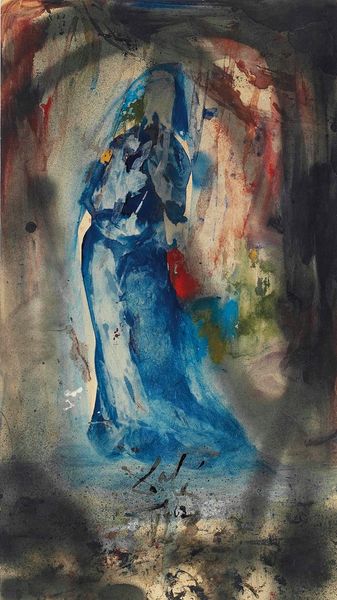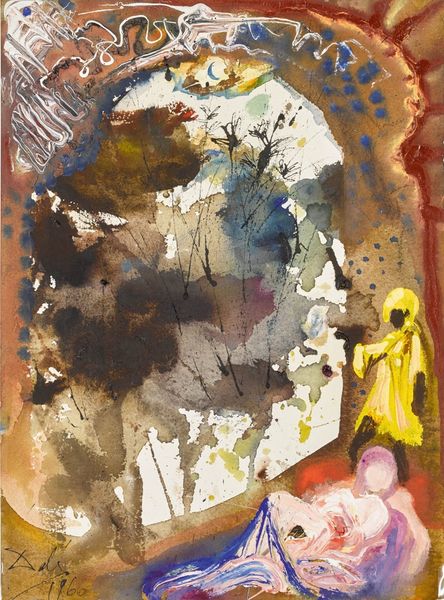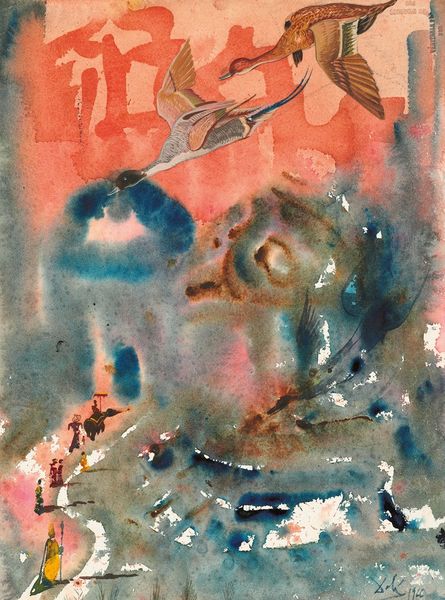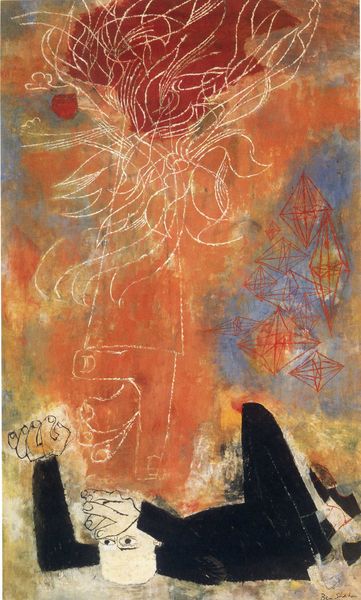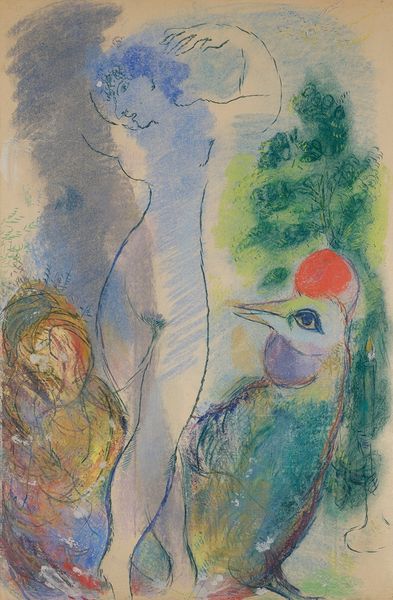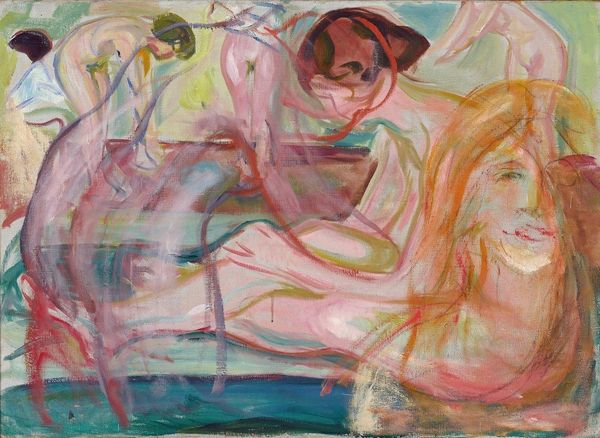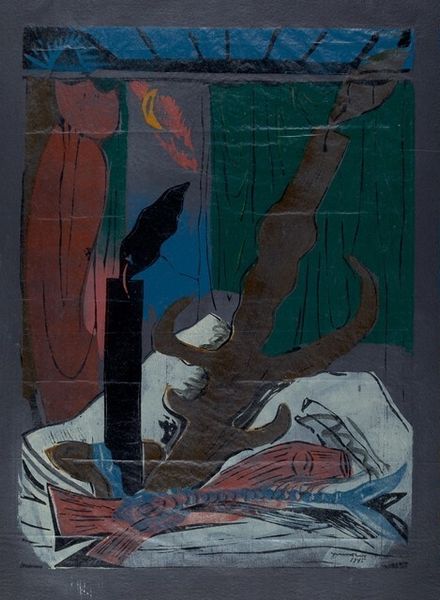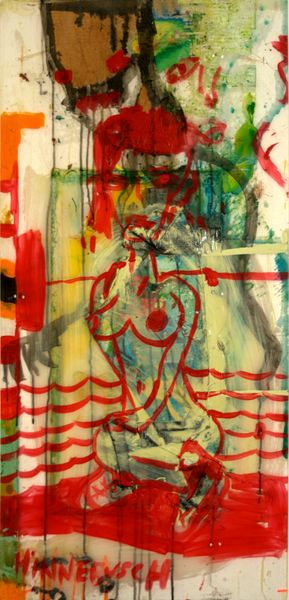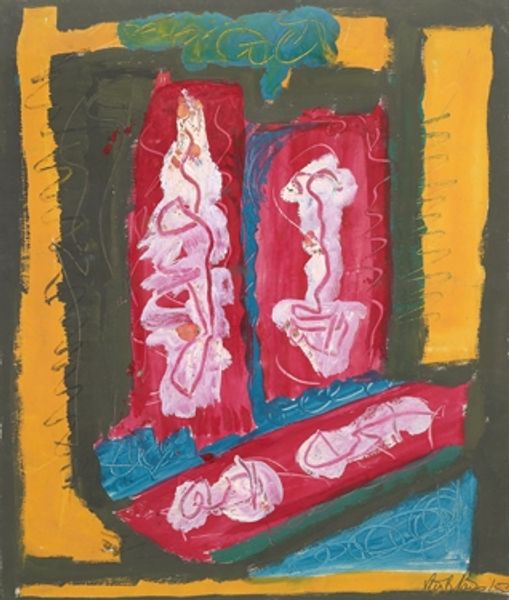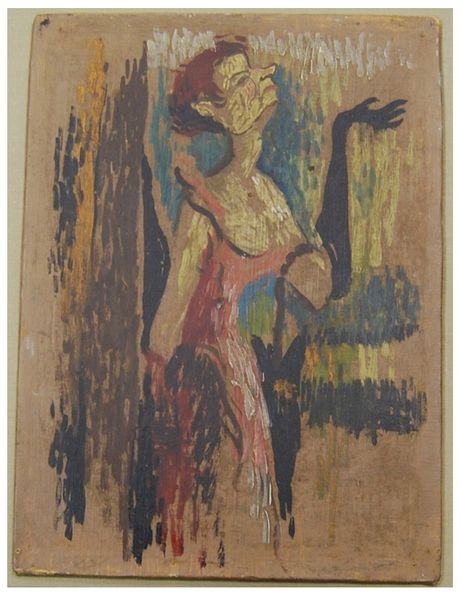
watercolor
#
portrait
#
figuration
#
oil painting
#
watercolor
#
orientalism
#
nude
#
surrealism
Copyright: Modern Artists: Artvee
Curator: Immediately, I sense a dreamscape unfolding—turbulent yet tender. What do you see? Editor: I find it fascinating how Dalí, known for his surreal canvases, ventures into what seems a fusion of Orientalism and Surrealism in this 1966 watercolor titled "Esclave voilée et homme avec coiffe rouge" or "Veiled Slave and Man with Red Headdress". It is held in a private collection. Curator: "Veiled Slave," hm? But look closer, the veil isn’t quite hiding, is it? More like suggesting, teasing… like the memory of a dream you just can’t quite grasp. It floats ethereally around the figure. I wonder, what chains does the "slave" truly wear? Editor: Ah, yes, that brings up an interesting point! How Dalí’s exoticization potentially echoes the prevailing cultural attitudes of his time. Consider how he positions his figures within a narrative that hints at power dynamics, playing on the "mysteries" of the Orient. But isn't this artistic license blurring boundaries of cultural sensitivity? Curator: Boundaries, shmoundaries. For Dalí, it’s always about plumbing the depths of the subconscious. What stories are buried under those red headdresses and veils? It's not a literal place for Dalí, rather it is a state of mind. Editor: Perhaps. Though, acknowledging the visual vocabulary associated with Orientalism becomes vital. How it has historically served as a framework for the West to define itself against an “other”. The male gaze is also definitely at play, informing our viewing experience. Curator: And yet… there is an undeniable beauty. The translucent layering of colors creates a watery, dreamlike quality. Is that beauty enough? That shimmering watercolor, its beauty has me locked. Editor: Beauty that cannot absolve historical contexts, maybe it should be recognized. It is the dialogue—that we are having—that hopefully expands understandings and perhaps inspires future artistic endeavors rooted in consciousness. Curator: Yes. Because only in dialogue do the veils truly begin to lift, and the locked doors swing open, right? Editor: Precisely! That's the enchanting and enduring quality of art, isn't it?
Comments
No comments
Be the first to comment and join the conversation on the ultimate creative platform.
